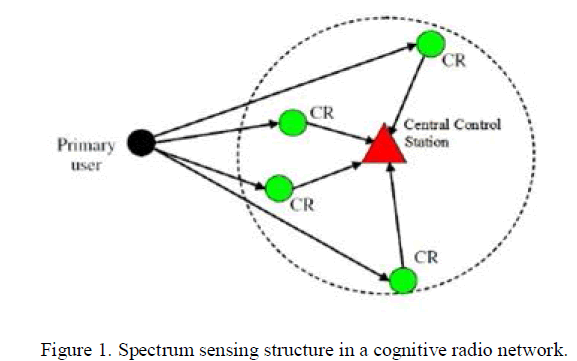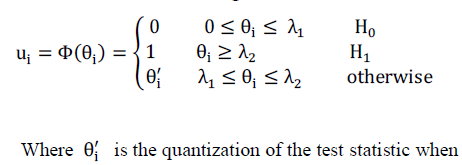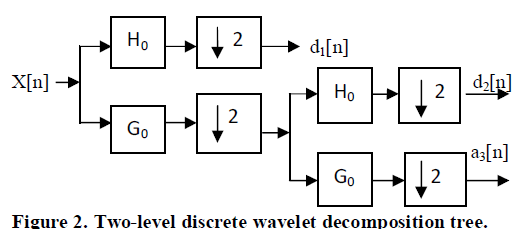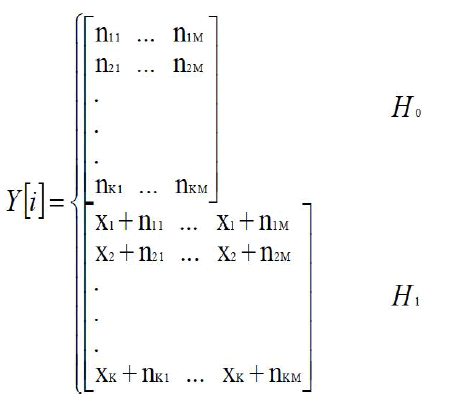ISSN ONLINE(2278-8875) PRINT (2320-3765)
ISSN ONLINE(2278-8875) PRINT (2320-3765)
| Dr.T.V.U.Kiran Kumar HOD, Dept of ECE, Bharath University, Chennai – 600073, India |
| Related article at Pubmed, Scholar Google |
Visit for more related articles at International Journal of Advanced Research in Electrical, Electronics and Instrumentation Engineering
The Cognitive radio is used to allow the unlicensed user to use the band of licensed user. Spectrum scarcity and spectrum underutilization problem can be solved by using a cognitive radio. Accuracy and efficiency can be achieved in the system. The spectrum holes in Cognitive Radio can be detected by the use of a cooperative energy detection. Spectrum sensing is done to locate The unused spectrum segment is located by spectrum sensing. These segment without harmful interference to licensed user. During the sensing period, each secondary user senses the different channel to improve the spectrum sensing efficiency. Co-operative spectrum sensing is used to detect the spectrum availability in a cognitive radio environment and to avoid the interference factor such as multipath factor and shadow effect. Literature suggests that further improvement in accuracy of detection can be achieved using 1D&2D wavelet transforms. In this project, we are investigating the applicability of matched filter technique to improve the performance parameters of cognitive radio spectrum detection process.
Keywords |
| Cognitive radio, Energy detection, Cooperative spectrum sensing. |
INTRODUCTION |
| Traditionally spectrum allocation is performed using an inflexible approach, where fixed frequency bands are assigned to specific licensed users and cannot be used by other users even if the licensed users are idle. Since this approach causes spectrum under–utilization and has led to spectrum scarcity, more flexible approaches to spectrum allocation ha ve gained popularity in recent years. In particular, cognitive radio (CR) has emerged as a promising solution by allowing unlicensed (secondary) users (SUs) to opportunistically access the bands assigned to licensed (primary) users (PUs). In CR networks, SUs are not allowed to interfere with the transmissions of PUs. Hence, CRs must perform spectrum sensing to determine whether or not a PU is present before accessing a frequency band. |
| Recent studies also show that most of the assigned spectrum is underutilized while the increasing number of wireless applications led to spectrum scarcity. Cognitive Radio (CR) is a novel wireless communications technology which can solve spectrum scarcity and spectrum underutilization problems. |
| Recently, the Federal Communications Commission (FCC) has passed the proposal where the bands of licensed users can be accessed by unlicensed users and this is spectrum reuse. In cognitive radio, spectrum sensing is done to locate unused spectrum segments and optimally use these segments without harmful interference to the licensed users. |
| Cognitive radio systems that utilize unused spectral holes within licensed bands is one to the solution to solve the problem of spectrum crisis. The idea is to detect times when a specific licensed band is unused at a particular place and use the band for transmission without causing any significant interference to the transmissions of the license-holder. The secondary users are, in general, not aware of the transmission scheme used by the primary users and may not be synchronized to the primary’s signal. This means that the secondary users are constrained to use non-coherent energy detectors or feature detectors which have much poorer performances than coherent receivers under low SNR. Added to these issues of low SNR is the hidden-terminal problem that arises because of shadowing. Secondary users may be shadowed away from the primary’s transmitter but there may be primary receivers close to the secondary users that are not shadowed from the primary transmitter. Hence, if the secondary transmits, it may interfere with the primary receiver’s reception. This issue also needs to be addressed in order to design practical solutions to the detection problem. |
| Among existing spectrum sensing algorithms in CR, energy detection has been widely applied since its algorithm is simple and it does not require transcendental knowledge of the licensed user’s signals. And the other factors like interference, multipath shadow great challenges of implementing spectrum sensing. |
| To solve these problems, many cooperative energy sensing algorithms based on OR rule, AND rule and majority rule have been analyzed. However, literature studies mention signal processing before energy sensing. In this paper an OR rule based Energy Detection technique for Cooperative Spectrum Sensing with 1-D and 2-D wavelet de-noising is proposed. The 1-D one level wavelet de-noising is performed at each sensing node (CR) before energy detection, while the 2-D two level wavelet de-noising is implemented at the central control station (CCS). Simulation results show that the spectrum sensing performance (probability of missed detection vs. probability of false alarm) is improved significantly by the proposed OR rule based cooperative spectrum sensing algorithm with wavelet de-noising as opposed to the conventional method. |
COGNITIVE RADIO SYSTEM |
| In a cognitive radio system the unlicensed users can access a licensed users vacant channel only after spectrum sensing is completed. This can be done by first detecting the primary user which has some portion of the available spectrum within the range of CR. |
 |
| According to the Huffman encoding algorithm in information theory, the base station should assign less bits to the unlicensed users with the high reliability for reporting the results, and assign more bits to the unlicensed users with the low reliability for reporting the results. But this method needs the station know the reliability of all the unlicensed users. This is impossible because the channel and the received signal strength of unlicensed users’ are both changing. |
| In order to effectively use the reliability of unlicensed users under bandwidth constraints, the unlicensed user make a local decision when its reliability is high, when the reliability is low the unlicensed user make a quantization. When the unlicensed user can detect whether the licensed user is present or not, its reliability is high. Two thresholds λ1 and λ2 are selected which is used to measure the reliability of the collected energy of the unlicensed user. H0 represents that the primary user is absent and H1 indicates primary user is in operation. |
| “Quantization of the statistic” is an term used in cognitive radio which means that the observation is not reliable enough to make a decision and the unlicensed user will send the quantization of the test statistic to the base station. |
| Every unlicensed user conducts spectrum sensing individually and collects the energy ïÿýïÿý. The local decision of the unlicensed user is according the rules: |
 |
| λ ≤ θ ≤ λ& . Let M is the number of the quantization bits. It was shown that two or three bits quantization was most appropriate without noticeable loss in the performance .There are two thresholds as the bounds of the quantization. So the number of average sensing bits will not be too large. |
| After the local decision or quantization of the unlicensed users, the result i u is sending to the base station through the control channel. The base station collect the M bits data, and make a fusion with the energy-fusion method . Using the fusion result u K+1 and the 1 bit local decisions received from unlicensed users, the base station will make a final decision according the fusion function u= Ω (u1, u1,….. uK+1).To further limit the interference to the licensed user, the OR-rule is used in the base station. |
COGNITIVE RADIO SENSING |
| One of the most challenging issues of spectrum sensing is the hidden terminal problem, which happens when the cognitive radio is shadowed or in deep fade. To address this issue, multiple cognitive radios can be coordinated to perform spectrum sensing. Several recent works have shown that cooperative spectrum sensing can greatly increase the probability of detection in fading channels. |
| In general, cooperative spectrum sensing is performed as follows: |
| Step 1: Every cognitive radio i performs local spectrum measurements independently and then makes a binary decision Di ∈ {0, 1} for all i = 1,.........., K; |
| Step 2: The binary decisions are forwarded to CCS by all the cognitive radios. |
| Step 3: The CCS decides whether H0 or H1 . |
| In the above cooperative spectrum sensing algorithm, each cooperative partner makes a binary decision based on its local observation and then forwards one bit of the decision to the CCS. At the CCS, all 1-bit decisions are fused together according to following logic rule |
| denotes the false alarm probability of the ith CR in its local spectrum sensing. The missed detection probability of cooperative spectrum sensing is given by |
| where denotes the missed detection probability of the ith CR in its local spectrum sensing. |
PROPOSED SYSTEM |
1. Wavelet transform |
| Wavelet transform has been proved a useful tool for signal analysis and is widely used in signal processing (e.g. de-nosing applications). The Continuous Wavelet Transform (CWT) is provided by (8), where y(t) is the signal to be analyzed, ψ(t) is the mother wavelet or the basis function[8]. |
| The Discrete Wavelet Transform (DWT) is a sampled version of the CWT. The DWT is computed by successive lowpass and highpass filtering of the discrete time-domain signal as shown in Fig.3. The signal is denoted as X[n], where n is an integer. The lowpass filter is denoted by G0 while the highpass filter is denoted by H0. At each level, the highpass filter produces detail information d[n], while the lowpass filter associated with scaling function produces coarse approximations a[n]. |
| The 2-D DWT has been widely used in image compression and de-nosing. 2-D DWT is carried out by applying the 1-D DWT in both the horizontal and the vertical direction of the image matrix. |
 |
A. Spectrum sensing with 1-D wavelet de-nosing |
| As energy sensing requires very short detection period, the channel gain h and primary user’s signal are supposed to have few changes during each detection period. So the system model can be simplified as: |
| Also the noise in (9) is independent and identically distributed Gaussian white noise which means N[i] ~ N(0, σ²). Here x is the received signal and assumed to have few changes during such a short detection period. Wavelet de- nosing is useful mainly based on the “concentrating” ability of wavelet transform. On one hand, signal always has its energy concentrated in a small number of wavelet dimensions; on the other hand the noise spreads its energy over a large number of coefficients. Equation (9) can be written in wavelet transform domain as [7] |
| Where W denote a left invertible wavelet transformation matrix of the discrete wavelet transform (DWT), X equals [x1,x2, . . . , xM] or a M length zero vector. Since X has few changes, the detail information of WX is nearly zero. So the detail information dy only contains the detail information of noise in the wavelet transformation domain. After removing this detail information, the desired signal can be retrieved by the inverse wavelet transform without any loss of the original signal X; while the noise energy is significantly lowered. The procedure of spectrum sensing with 1-D wavelet de-nosing is summarized as follows: |
| i. calculate the discrete wavelet transform coefficients of signal Y = [y1, y2, . . . , yM] and get the detail information dy and coarse approximation ay |
| i. set the detail information vector dy = 0, calculate the inverse wavelet transform with coarse approximation ay and new detail information dy, and get the new signal Y . |
B. Spectrum sensing with 2-D wavelet de-nosing |
| When the sensing nodes send their received signals to the central control station, 2-D discrete wavelet transform can be employed to reduce the impact of noise. The system model in (7) can be written as |
 |
MATCHED FILTER |
| Matched filtering is used to detect the primary user when the transmitting signal is known. It gives high SNR for the given input. Convolution is at the heart of matched filters. |
| The matched filter is also to increase the SNR in the presence of noise. Cognitive radio is used in matched filter in order to demodulate the received signal .So it needs to know certain parameters of primary such as operating frequency and bandwidth etc.When matched filter compares two signals it uses fast fourier transform and multiply the corresponding coefficients and again take the inverse fourier transform . Major advantages of matched filter is that it needs less time to achieve high processing gain and probability of false alarm and missed detection due to coherent detection. |
CONCLUSION AND FUTURE WORK |
| In this paper, a new OR rule based cooperative spectrum sensing algorithm with 1-D and 2-D wavelet de-nosing has been proposed. In 1-D wavelet de-nosing algorithm, the wavelet de-nosing processing was performed in each sensing node while in 2-D wavelet de-nosing algorithm the signals were collected to the central control station firstly and then the 2-D wavelet de-nosing processing was implemented. Both algorithms employed the traditional cooperative energy spectrum sensing algorithm based on OR rule to overcome shadowing effect. A couple of numerical simulations were carried out to verify this new cooperative spectrum sensing algorithm under low SNR conditions. Simulation results showed that spectral sensing efficiency can be improved considerably by introducing wavelet transform into OR rule based cooperative spectrum sensing. In addition, higher the level of wavelet transform better will be the sensing performance. |
References |
|